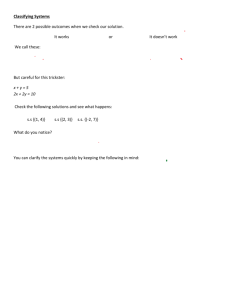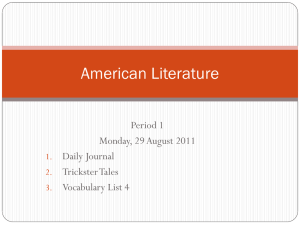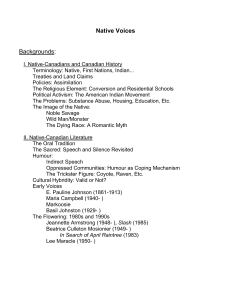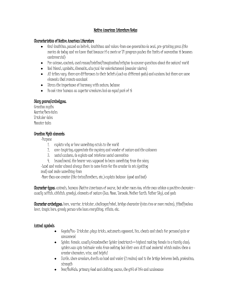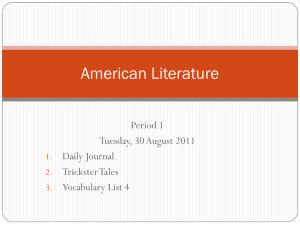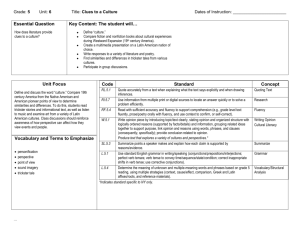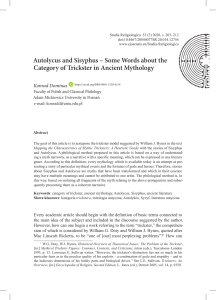: Trickster: Native American Tales: A Graphic Collection
advertisement
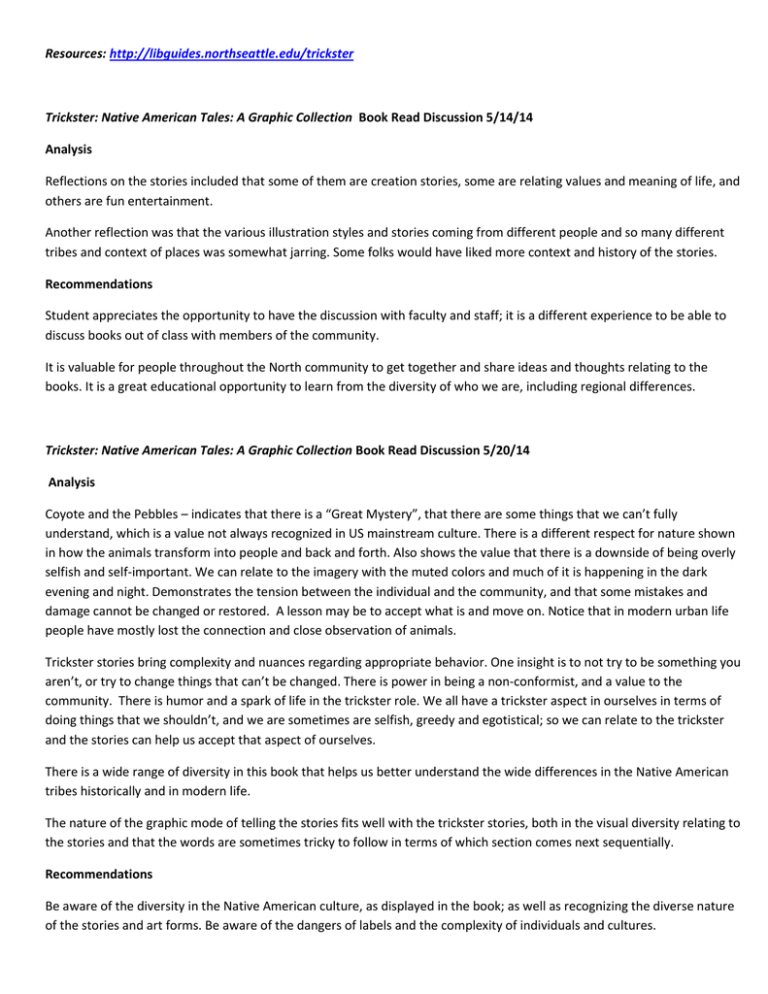
Resources: http://libguides.northseattle.edu/trickster Trickster: Native American Tales: A Graphic Collection Book Read Discussion 5/14/14 Analysis Reflections on the stories included that some of them are creation stories, some are relating values and meaning of life, and others are fun entertainment. Another reflection was that the various illustration styles and stories coming from different people and so many different tribes and context of places was somewhat jarring. Some folks would have liked more context and history of the stories. Recommendations Student appreciates the opportunity to have the discussion with faculty and staff; it is a different experience to be able to discuss books out of class with members of the community. It is valuable for people throughout the North community to get together and share ideas and thoughts relating to the books. It is a great educational opportunity to learn from the diversity of who we are, including regional differences. Trickster: Native American Tales: A Graphic Collection Book Read Discussion 5/20/14 Analysis Coyote and the Pebbles – indicates that there is a “Great Mystery”, that there are some things that we can’t fully understand, which is a value not always recognized in US mainstream culture. There is a different respect for nature shown in how the animals transform into people and back and forth. Also shows the value that there is a downside of being overly selfish and self-important. We can relate to the imagery with the muted colors and much of it is happening in the dark evening and night. Demonstrates the tension between the individual and the community, and that some mistakes and damage cannot be changed or restored. A lesson may be to accept what is and move on. Notice that in modern urban life people have mostly lost the connection and close observation of animals. Trickster stories bring complexity and nuances regarding appropriate behavior. One insight is to not try to be something you aren’t, or try to change things that can’t be changed. There is power in being a non-conformist, and a value to the community. There is humor and a spark of life in the trickster role. We all have a trickster aspect in ourselves in terms of doing things that we shouldn’t, and we are sometimes are selfish, greedy and egotistical; so we can relate to the trickster and the stories can help us accept that aspect of ourselves. There is a wide range of diversity in this book that helps us better understand the wide differences in the Native American tribes historically and in modern life. The nature of the graphic mode of telling the stories fits well with the trickster stories, both in the visual diversity relating to the stories and that the words are sometimes tricky to follow in terms of which section comes next sequentially. Recommendations Be aware of the diversity in the Native American culture, as displayed in the book; as well as recognizing the diverse nature of the stories and art forms. Be aware of the dangers of labels and the complexity of individuals and cultures. Reading a discussing a book in community is so valuable to gain more learning from the book and connecting with the community here. As a student – it is so valuable to learn in community with classes and in this book discussion. The book provides a model of how it is Ok to make mistakes and still be accepted in the community. Storytelling has not always been as valued in academia as other forms of communication. It is useful to have this book as a model that students should also be supported and valued in telling their own stories in the way that works best for them; and not be judged as incorrect even in their grammar, etc. All here are learning, including staff and instructors learning from students; we all gain from the diversity we represent when we come together in community to share our stories. Trickster: Native American Tales: A Graphic Collection Book Read Discussion 5/29/14 Analysis – The group reflects on the cultural values reflected, such as whether the group is more important than the individual in the community. The expected behavior for the culture is reflected frequently in terms of who gets success or failure, such as being selfish, challenging the group norms, etc. Another lesson from the some of the stories emphasize that once you take an action there are consequences that you cannot take back, so be careful. Another reflection relates to what Roger Fernandes told us about how the coyotes survived better than the wolves because they adapted to the human incursion by becoming more individual than remaining in packs, which are more easily eliminated. Spoken language and repeating stories is not as valued as it used to be. The value of repetition within a story is important to language and story learning, with children and ESL students. The first story, Coyote and the Pebbles, is a spiritual story relating to creation of the starry sky and the relationship of the animals with the “Great Mystery.” The stories reflect to complexity of life, that there is not always a clear moral or victory of those we see as good. The way that the animals, people and earth are connected as relatives is spiritual and connected to the universe. We might read this book again in a couple of years and see new meaning in the book. The stories have a living quality, without tidy endings and morals. Another reflection is relating to death, and how coyote doesn’t die, but comes back to life. There is resurrection in several stories. The ants as a community help the raccoon return to life. Different animals are tricksters and powerful in magical ways in different cultures. Recommendations to North – One lesson for us is that everyone has a role in making the community work. Everyone on our campus brings their own stories and values to enrich our community. Would be nice to cultivate the sharing of our stories among the larger community more. Reflection that there is not the same focus on shared goals at North as in some groups, such as the military. The students leave after two years, and the sense of culture and community is always changing. Leadership changes do lead to shifting sense of culture and connection, as well as the fact that we have a commuter population. “If you feel like you will be missed if you don’t show up, you will show up.” There is a tipping point of connection in a community where people will get connected and involved. Having events like these book read discussions helps build a sense of community, as well as having regular annual rituals such as the Springfest, the President’s breakfast, and continuity with those who work here. Art gallery openings are also good community building event. Strategies to invite students are important to work on so students know about community events. Having a campus newspaper is missed as a way to get information.
